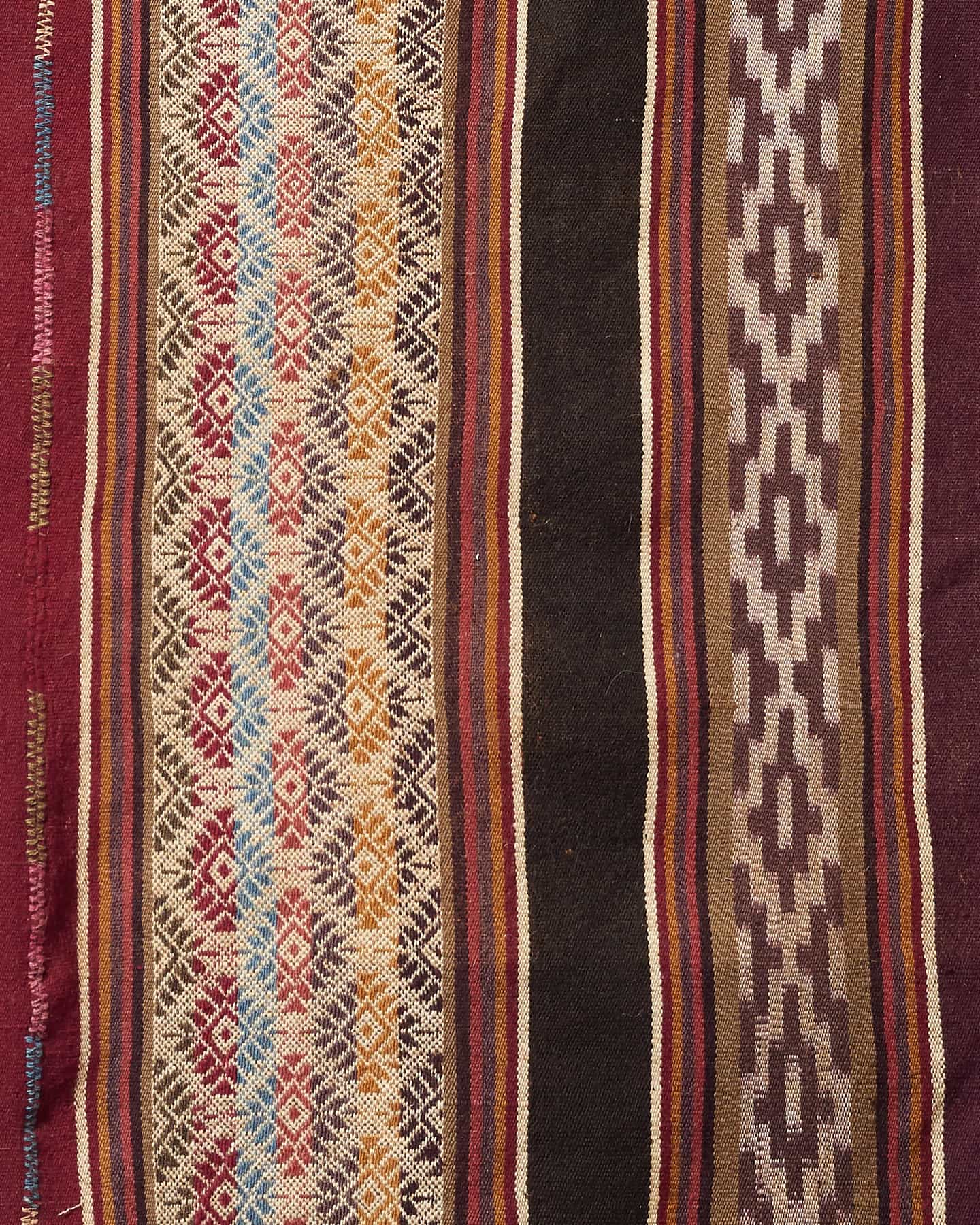



History behind the piece
The lliqlla is a typical textile of the Andes of Peru used by women in indigenous communities mainly as a coat. In contrast to its masculine brother, the poncho, which entered the city in a public and visible way, the lliqlla remained silent among its own and housed geometric signs that reveal, as in other pieces that are part of traditional Andean clothing, the space and identity of its creators.
The lliqlla covers the back of the woman and is traditionally fastened to the chest with silver pins known as tupu. This intricate warm weaving, whose elaboration process is particularly different from any other high Andean community, does not rely on a special technique to create its iconography, but on the contrary generates sections of plain fabric in solid color to later be able to embroider a remarkable design pattern.

Another important and distinctive section for the Santa Cruz de Sallac weaving is the watay. This dyeing technique, also called ikat, reserves knotted spaces and exposes others to the dye, thus coloring patterns directly on the threads that occupy the ends of the fabric to finally draw a chakana (andean cross). The color has a special meaning beyond its beauty, since the combinations are not used by chance, but rather respect schemes capable of indicating the geographical space to which the fabric belongs. This, in particular, is a piece made with sheep's wool, an example considered an expression of ethnographic art1.
Unlike many handmade fabrics that are currently developed on large pedal looms made of wood from the colonization era, this traditional piece was made on a simple backstrap loom; instrument used for more than 5000 years by the ancient inhabitants of the Andes.

Approximately two and a half months were used for its creation, just in terms of setting the loom and the careful hand-weaving and embroidery. It is worth mention that this time does not include the previous processes through which its fibers pass: from the shearing of the wool, the cleaning of impurities, the unraveling of the fleece, the color classification, the first twisting of the fibers to obtain the preliminary thread, the development of the skein, the dyeing with plants, to the final spinning, processes that are also carried out by hand.
This piece preserves the traditional characteristics of shape, color, decoration and size typical of the lliqllas in the community of Santa Cruz de Sallac. Its multicolored fabric that goes from burgundy to black, passing through touches of terracotta, solidago and Maya blue (dyed with wild pigments) dedicates its iconographies mainly to the sky, a notion suggested thanks to the large number of stars present in its pattern.
Origin: Santa Cruz de Sallac, Cusco
Measurements: 97 cm x 106 cm
Condition: Excellent
SKU: 0428
Measurements: 97 cm x 106 cm
Condition: Excellent
SKU: 0428
USD
$ 2120.00
$ 2120.00
1Ethnographic Art is considered to be that production made by the member of an ethnic group, made exclusively for personal or communal use, and that necessarily carries a cultural load of the people to which it belongs.
ADD THIS PIECE TO YOUR WISH LIST
